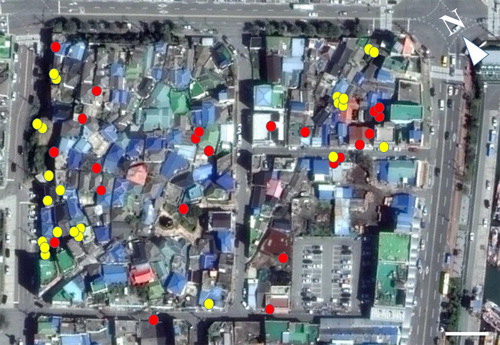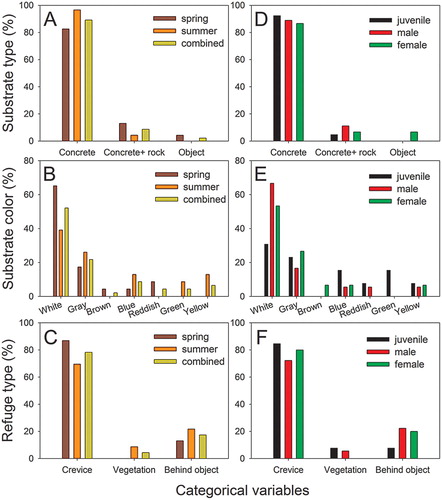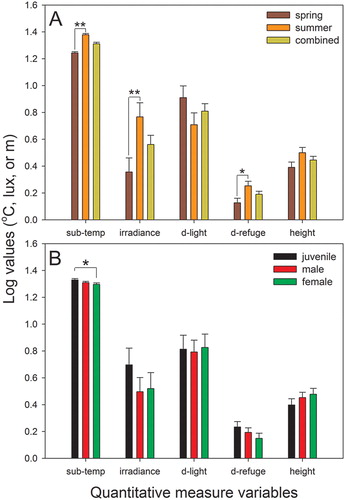Figures & data
Figure 1. Photographs of the study site (34.8001923 N, 126.3895584 E, 210 m × 150 m) located in Dongmyeong-dong, Mokpo-si, Chonnam, South Korea, as obtained using Google Earth Pro. The locations where geckos were found are indicated by yellow for spring and red for summer. White bar = 20 m.

Figure 2. Comparison of the microhabitat use of G. japonicus in terms of categorical variables between spring and summer (a, b, c) and among different reproductive groups (d, e, f). None of the variables showed significant differences between the groups. ‘Combined’ in panels A, B, and C indicates the combined data from two seasons.

Table 1. Correlations among time after sunset (TAS) and five quantitative measure microhabitat variables for G. japonicus in spring and summer. Significant correlations are indicated in bold.
Figure 3. Comparison of the microhabitat use of G. japonicus in terms of quantitative measure variables between spring and summer (a) and among different reproductive groups (b). ‘Combined’ in panel A indicates the combined data from two seasons. The data are the estimated marginal means +1 SE, which considered covariates in the analysis model. Sub-temp, substrate temperature where geckos were observed; d-light, distance to the main light source illuminating the geckos; d-refuge, distance to the nearest potential refuge. *P < 0.05; **P < 0.01.

